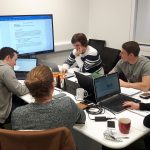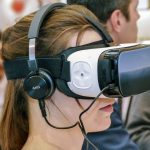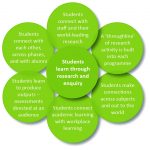“The Sticky Campus”; improving our students’ sense of belonging through active learning, coffee and...
2018 promises to be an exciting and challenging year for universities and the Higher Education sector. Among the many less than positive news, there are also successful practices that make our universities stand out in the way in which they support their students’ experience, widen access and participation, and support their mental health and wellbeing. The ‘Sticky Campus’ at Abertay University is one such example. As Robertson explains and describes, the concept is simple and yet complex in its operationalisation.
How one university is tackling under-utilised teaching spaces
Single discipline teaching labs can often be under used: typically for just 24 weeks per year. Ian Tidmarsh explains how new larger teaching labs at the University of Birmingham aim to provide more flexibility, higher utilisation and thus deliver better value for money.
What are the features of excellent technology-enhanced teaching?
Technology from tablets to virtual reality headsets can be used in a range of ways to enable great teaching and improve student outcomes. Jisc's Sarah Davies offers her expert view on what helps technology-enhanced teaching make the grade.
How student innovation is supporting efficiency in education
Following the shortlisting of six digital solutions for Jisc funding as part of the Summer of Student Innovation, Rosie Niven catches up with one of the 2013 winners to find out the progress of his project.
Dilly Fung: making connections at UCL
University College London is pioneering a series of projects to break down the boundaries between teaching and research. Dr Dilly Fung, who leads on these initiatives within UCL, tells Rosie Niven how they are benefiting staff and students.
Developing employable students in a digital age
What does an 'employable student' look like in a digital age? And how can universities use technology to help support the development of student employability? Sarah Davies of Jisc has some answers to both questions.
From manual to automatic: developing learning analytics at Aston
After Aston University carried out a project to identify students at risk of withdrawal or non-progression, they realised they needed to move from manual analytics to a more comprehensive learning analytics system. Following a partnership with Jisc to develop such a system, they are already seeing the benefits, as James Moran explains.
Only connect: UCL’s vision for greater synergy between research and education
Institutions across the world are increasingly looking at fresh possibilities of making connections between their research and students educations. Dilly Fung explains three new, interrelated initiatives at UCL that are designed to make research and education inspire and strengthen each other.
Beacons of learning – micro-location technology on campus
The growing use of smartphones is making micro-location technology more attractive and delegates at this week's ALT Annual Conference 2016 will learn about how it could be used in universities. Ahead of the presentation, Sheffield Hallam University's Ian Glover describes a study he has jointly carried out into the use of 'bluetooth beacons' in higher education.
The right tools for the job: harnessing the power of student voice through HearNow
In this blog Jo Clarkson, Market Research and Insight Manager at the University of Warwick, shares how the HearNow project increased students’ feedback while minimising survey fatigue. The project by gathering students’ opinions as ‘snap-shot’ sentiments through technology and Gamification raised the number of active users from 200 to 13,000 with an average of 50% response rate.













